Discover the main function of whitelist and how it enhances security by allowing only trusted entities. Learn about its applications, benefits, and best practices to protect your systems effectively.
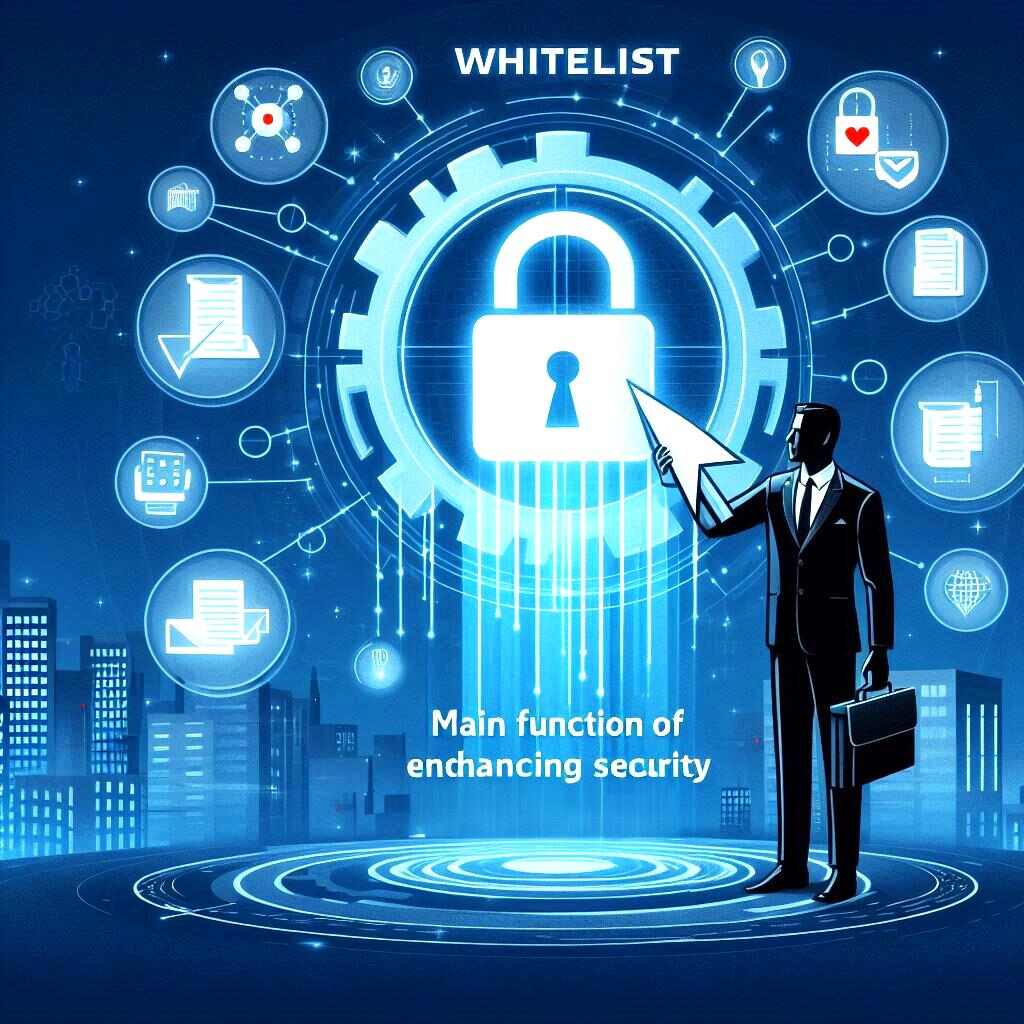
Introduction
In the ever-evolving world of technology and cybersecurity, keeping our systems safe and secure is paramount. One essential tool in this is whitelisting. But what exactly is a whitelist, and how does it function? Let’s dive deep into the main function of whitelist, its various applications, and why it’s crucial for cybersecurity.
What is a Whitelist?
A whitelist is a list of approved or accepted items, entities, or individuals that are granted access to certain resources or privileges. In simpler terms, it’s like having a VIP list for a club where only those on the list are allowed entry. This concept can be applied to various fields, from cybersecurity to email management.
The Origins of Whitelisting
The term “whitelist” originated in the early days of computing when systems needed a way to identify trusted users and applications. Initially, it was a simple method to allow access to specific users while blocking others. Over time, this concept evolved into a sophisticated security measure used in various domains.
In the early stages, whitelisting was primarily used in network security to allow only specific IP addresses or devices to access a network. This was a straightforward approach to ensure that only known and trusted entities could connect, thereby reducing the risk of unauthorized access and attacks.
As computing technology advanced, the concept of whitelisting expanded to include applications, email addresses, and even entire networks. The idea was to create a controlled environment where only pre-approved entities could interact with the system, thus minimizing potential threats.
The evolution of whitelisting can be attributed to the increasing complexity of cyber threats. Traditional security measures like blacklisting, which blocks known malicious entities, were no longer sufficient. The need for a more proactive approach to cybersecurity led to the adoption of whitelisting as a critical component of security strategies.
How Whitelisting Works
Whitelisting operates by maintaining a list of trusted entities, such as users, applications, or IP addresses, that are permitted to access a system or network. Here’s a step-by-step breakdown of how it works:
- Creation of the Whitelist: Initially, a list of trusted entities is compiled. This list is based on the known and trusted users, applications, or devices that need access to the system.
- Access Requests: When an entity attempts to access the system, a request is sent.
- Verification Against the Whitelist: The system checks the incoming request against the whitelist. If the entity is on the whitelist, access is granted. If not, the request is denied.
- Continuous Monitoring: Whitelists are continuously updated to ensure they remain current. New trusted entities can be added, and outdated or compromised ones can be removed.
This process ensures that only pre-approved entities can access the system, reducing the risk of unauthorized access and potential threats.
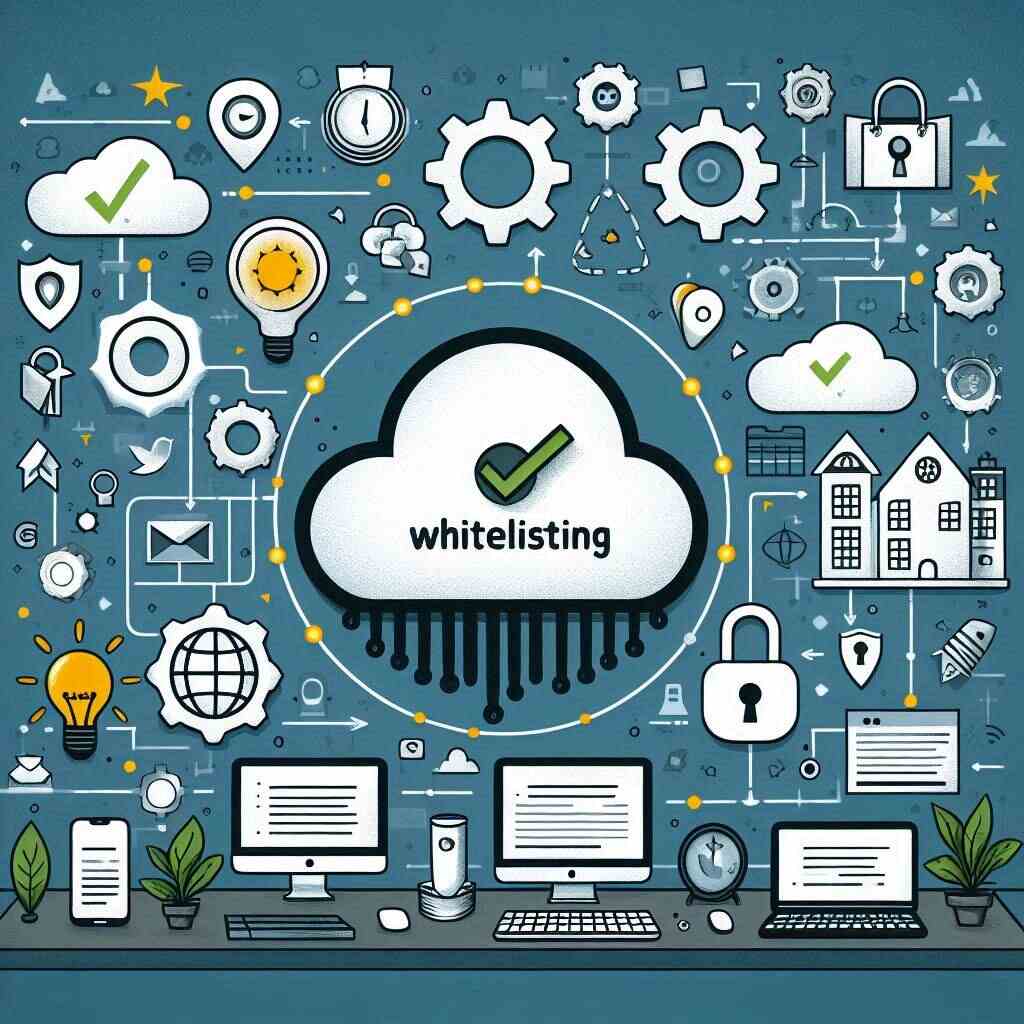
Main Function of Whitelist
The primary function of whitelist is to enhance security by permitting only trusted entities to access a system or network. Here’s why it’s essential:
- Preventing Unauthorized Access: By allowing only approved entities, whitelisting significantly reduces the risk of unauthorized access to sensitive data and systems.
- Blocking Malicious Software: Whitelisting is highly effective at preventing malware and other malicious software from running on a system, as only pre-approved applications can execute.
- Reducing False Positives: Compared to blacklisting, whitelisting can reduce the number of false positives, as it’s easier to manage a list of approved entities than to keep track of every potential threat.
- Compliance with Security Standards: Many industry standards and regulations require the use of whitelisting to ensure a secure environment, making it an essential component of compliance strategies.
Whitelisting in Cybersecurity
In the field of cybersecurity, whitelisting is a powerful tool used to protect systems and networks from a wide range of threats. Here’s how it’s applied:
- Application Whitelisting: Ensures that only authorized software can run on a system. This is particularly useful in preventing the execution of malicious programs and unauthorized software.
- Email Whitelisting: Helps to prevent phishing attacks and spam by allowing only emails from trusted senders to reach the inbox.
- Network Whitelisting: Restricts network access to only approved devices and IP addresses, thereby protecting the network from unauthorized access and potential attacks.
- System Hardening: Whitelisting is a key part of system hardening, which involves securing a system by reducing its surface of vulnerability. By allowing only trusted entities, the attack vectors are significantly minimized.
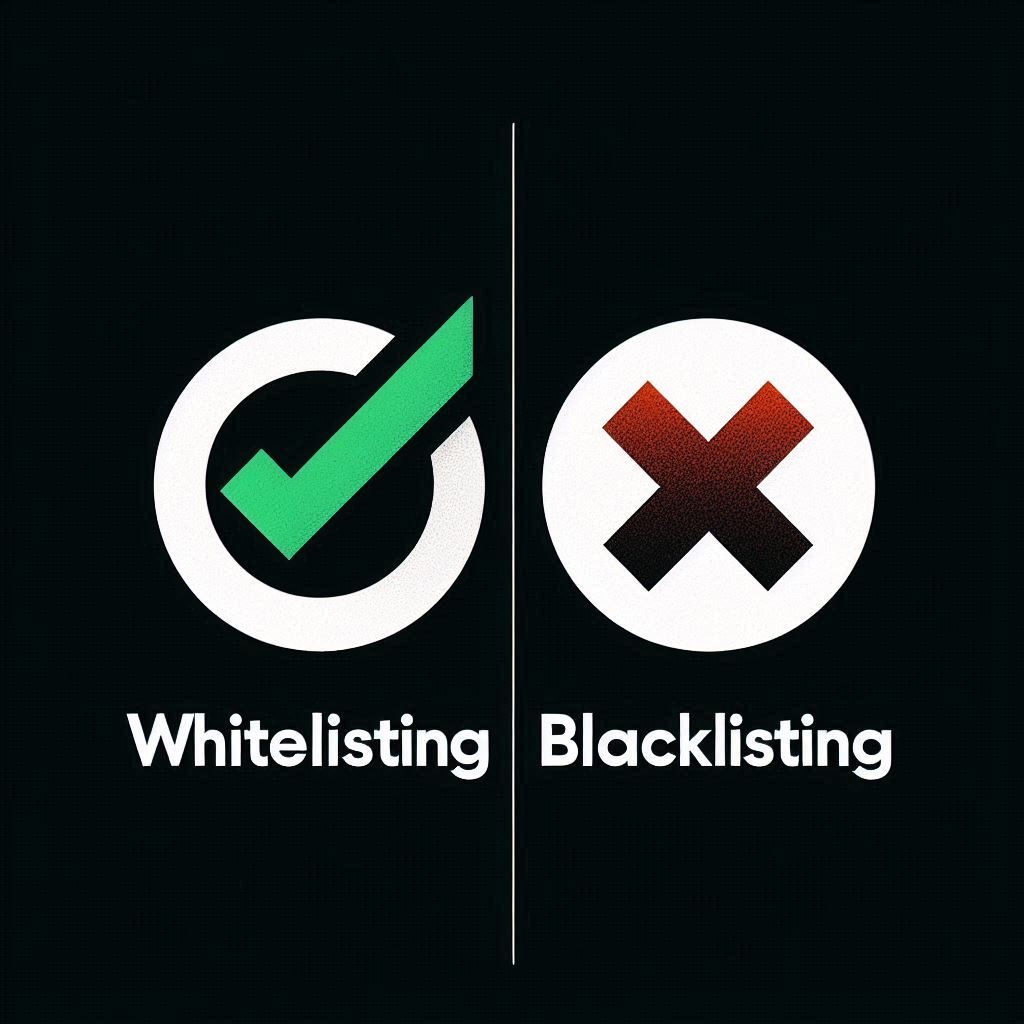
Whitelisting vs. Blacklisting
Whitelisting and blacklisting are two fundamental approaches to security, each with its unique advantages and limitations:
- Whitelisting: This approach permits only pre-approved entities to access a system. It is highly secure but can be restrictive and requires continuous maintenance to keep the list current. Whitelisting is proactive, focusing on allowing only known good entities.
- Blacklisting: In contrast, blacklisting blocks known malicious entities. It is more flexible and easier to manage in dynamic environments but can miss new or unknown threats. Blacklisting is reactive, focusing on blocking known bad entities.
Advantages of Whitelisting:
- Higher Security: Since only trusted entities are allowed, the chances of unauthorized access or malware execution are minimized.
- Control: Provides granular control over what is allowed to interact with the system.
Disadvantages of Whitelisting:
- Restrictive: Can be overly restrictive and may block legitimate entities not yet added to the whitelist.
- Maintenance: Requires ongoing maintenance to keep the whitelist updated.
Advantages of Blacklisting:
- Flexibility: Easier to implement in environments where new entities frequently need access.
- Ease of Management: Less administrative overhead compared to whitelisting.
Disadvantages of Blacklisting:
- Security Gaps: Can miss new or unknown threats, as only known malicious entities are blocked.
- False Positives: Higher chances of false positives, where legitimate entities are incorrectly identified as threats.
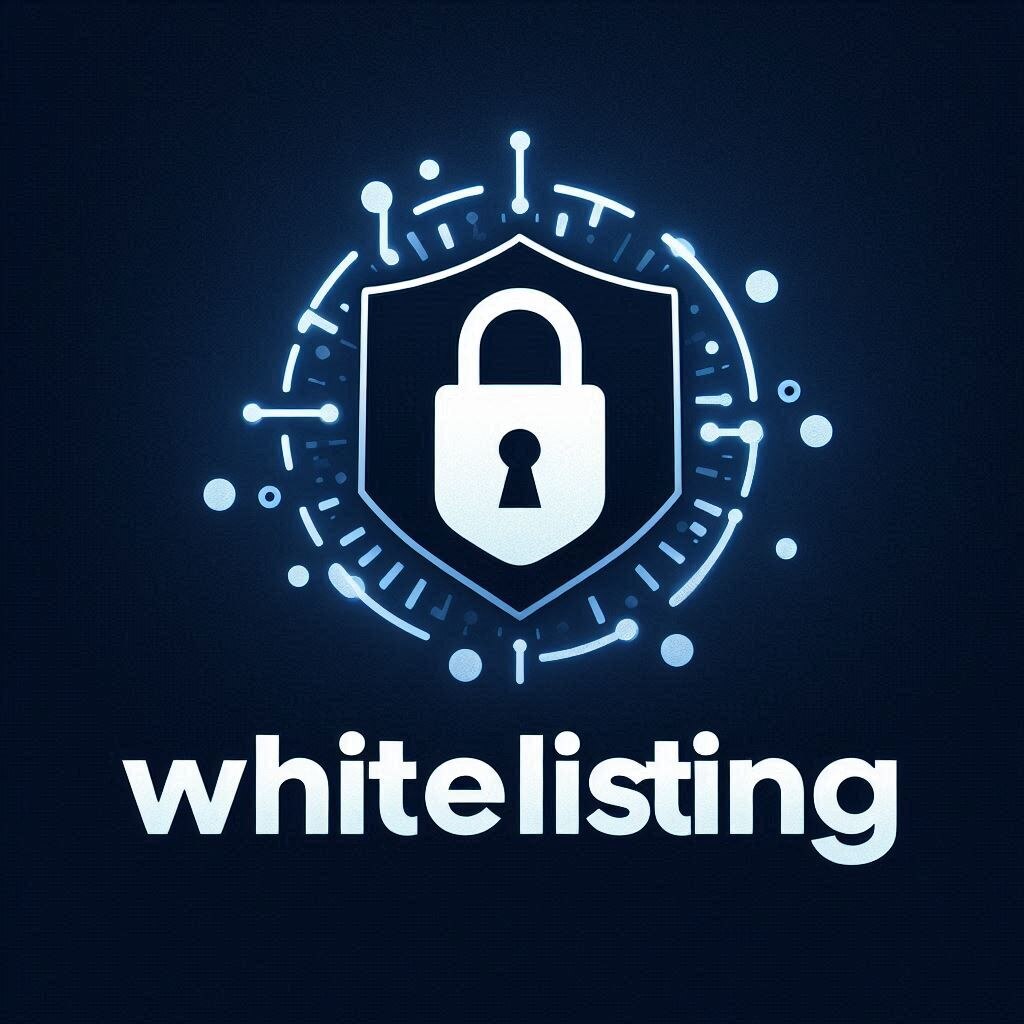
Types of Whitelisting
Whitelisting can be applied in various contexts to enhance security and streamline operations. Here are the primary types of whitelisting:
- Application Whitelisting
- Email Whitelisting
- Network Whitelisting
Each type serves a specific purpose and addresses different aspects of system security and efficiency.
Application Whitelisting
Application whitelisting ensures that only approved software can run on a system. This method is particularly useful in environments where strict control over software usage is required, such as corporate networks and government institutions. Here’s how it works:
- Approval Process: Before any application can be executed, it must go through an approval process. Once approved, it is added to the whitelist.
- Execution Control: Only applications on the whitelist are allowed to run. Any attempt to execute unapproved software is blocked.
- Continuous Monitoring: The whitelist is regularly updated to include new approved applications and remove outdated ones.
Benefits of Application Whitelisting:
- Enhanced Security: By allowing only trusted applications, the risk of malware and unauthorized software is minimized.
- Compliance: Helps organizations comply with security regulations that require strict control over software usage.
Challenges:
- Maintenance: Keeping the whitelist updated requires ongoing effort.
- Restrictiveness: May block legitimate applications that are not yet whitelisted, causing disruptions.
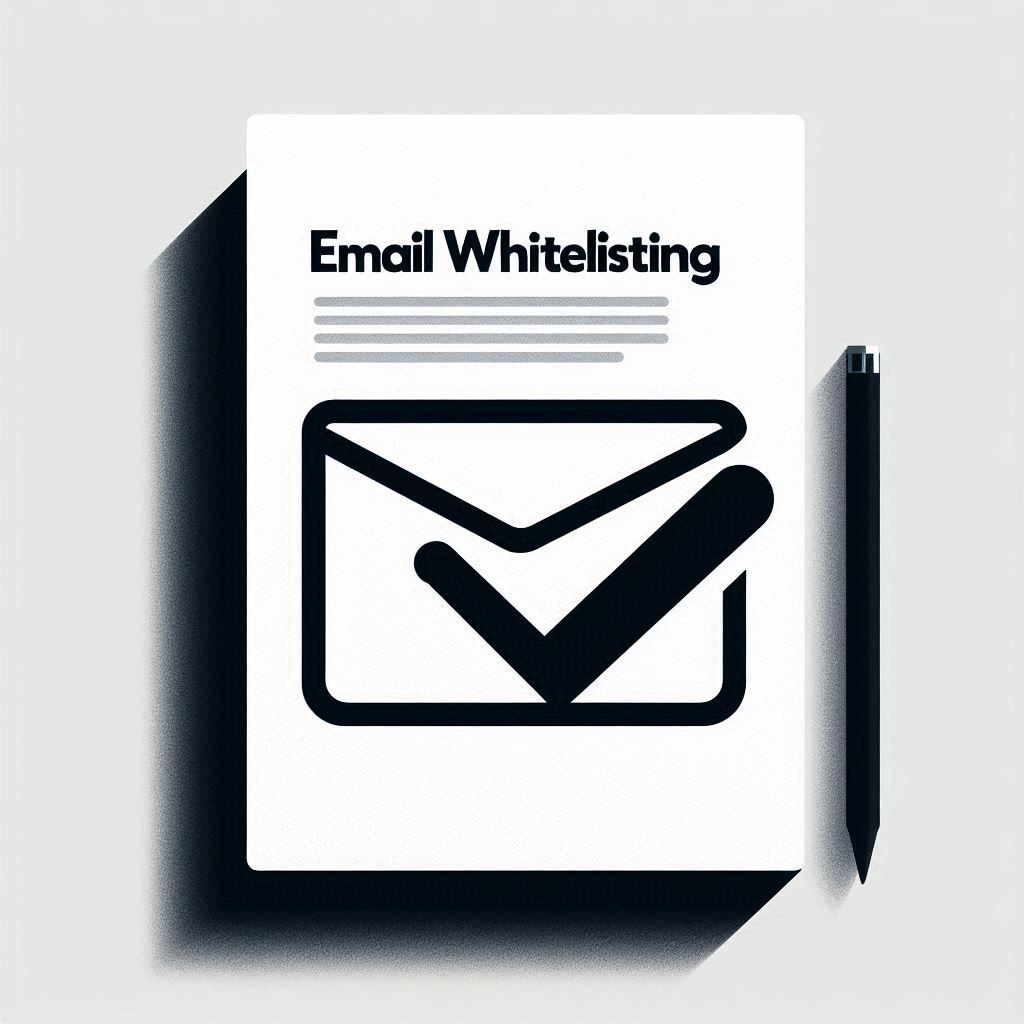
Email Whitelisting
Email whitelisting is used to ensure that only emails from trusted senders reach the inbox. This helps reduce spam and phishing attacks by blocking all emails not on the approved list. Here’s how it works:
- Trusted Senders List: A list of trusted email addresses or domains is created.
- Email Filtering: Incoming emails are filtered based on the whitelist. Only emails from approved senders are delivered to the inbox.
- Updating the List: The whitelist is updated regularly to add new trusted senders and remove outdated ones.
Benefits of Email Whitelisting:
- Spam Reduction: Significantly reduces the amount of spam and phishing emails.
- Increased Productivity: By ensuring that only legitimate emails are received, users can focus on important communications without being distracted by spam.
Challenges:
- Missed Emails: Legitimate emails from new or unlisted senders may be blocked, requiring manual intervention.
- Maintenance: The whitelist needs to be constantly updated to remain effective.
Network Whitelisting
Network whitelisting restricts access to a network to only approved IP addresses or devices. This is commonly used in secure environments where only specific devices are allowed to connect to the network. Here’s how it works:
- Approved Devices List: A list of approved IP addresses or devices is created.
- Access Control: Only devices on the whitelist are allowed to access the network. Any attempt by unapproved devices is blocked.
- Continuous Updating: The whitelist is regularly updated to include new approved devices and remove obsolete ones.
Benefits of Network Whitelisting:
- Enhanced Network Security: By allowing only trusted devices, the risk of unauthorized access and network attacks is minimized.
- Controlled Access: Provides granular control over which devices can access the network.
Challenges:
- Restrictiveness: May block legitimate devices that are not yet whitelisted, causing connectivity issues.
- Maintenance: Keeping the whitelist updated requires continuous effort.
Benefits of Whitelisting
Whitelisting offers numerous benefits, making it an essential component of modern cybersecurity strategies:
- Enhanced Security: By allowing only trusted entities, the risk of unauthorized access, malware, and other security threats is significantly reduced.
- Protection Against Zero-Day Attacks: Whitelisting can block unknown threats that traditional antivirus solutions might miss.
- Reduced Administrative Overhead: Once set up, whitelisting requires minimal maintenance compared to other security measures.
- Compliance: Helps organizations comply with industry standards and regulations that mandate strict control over system access.
Limitations of Whitelisting
While whitelisting is highly effective, it does have some limitations:
- Restrictiveness: It can be overly restrictive, potentially blocking legitimate entities that are not on the list. This can lead to disruptions in operations and require manual intervention to resolve.
- Maintenance: Keeping the whitelist up-to-date requires ongoing effort, especially in dynamic environments where new entities frequently need access.
- Initial Setup: Establishing a comprehensive whitelist can be time-consuming and complex, requiring a thorough understanding of the system and its trusted entities.
- Scalability: In large and rapidly changing environments, managing a whitelist can become challenging and resource-intensive.
Best Practices for Implementing Whitelisting
To maximize the effectiveness of whitelisting and ensure it enhances security without causing unnecessary disruptions, it’s essential to follow best practices. Here are some key guidelines:
- Regularly Update the Whitelist: Ensure the whitelist is frequently updated to include new trusted entities and remove outdated or compromised ones.
- Implement Multi-Factor Authentication: Combine whitelisting with other security measures, such as multi-factor authentication, for added protection.
- Monitor and Audit: Regularly monitor and audit the whitelist to ensure it remains effective and relevant.
- Educate Users: Train users on the importance of whitelisting and how it impacts their daily operations. This will help reduce resistance and ensure smoother implementation.
- Use Automation: Utilize automated tools to manage the whitelist and keep it updated. This can reduce the administrative burden and minimize errors.
- Set Clear Policies: Establish clear policies and procedures for adding and removing entities from the whitelist. This will ensure consistency and transparency in its management.
- Perform Risk Assessments: Regularly assess the risks associated with your whitelist to identify potential vulnerabilities and address them promptly.
Common Misconceptions About Whitelisting
There are several misconceptions about whitelisting that can lead to misunderstandings about its purpose and effectiveness. Here are some common ones:
- It’s too restrictive: While whitelisting can be restrictive, proper management and regular updates can balance security and usability.
- It’s a set-it-and-forget-it solution: Whitelisting requires ongoing maintenance and monitoring to remain effective.
- It replaces other security measures: Whitelisting should complement, not replace, other security strategies. It’s most effective when used alongside other protective measures.
- only for large organizations: Whitelisting is beneficial for organizations of all sizes, as it enhances security and protects sensitive data.
- It’s foolproof: No security measure is completely foolproof. While whitelisting significantly reduces risks, it should be part of a multi-layered security approach.

Future of Whitelisting
As cybersecurity threats continue to evolve, so too will whitelisting techniques. Here are some trends and advancements we can expect to see in the future:
- Integration with AI and Machine Learning: The use of artificial intelligence and machine learning will make whitelisting more intelligent and adaptive. These technologies can help identify and approve trusted entities in real-time, reducing the manual effort required.
- Automated Whitelisting: Automation will play a significant role in managing whitelists, ensuring they are always up-to-date without the need for constant manual intervention.
- Enhanced User Experience: Future whitelisting solutions will focus on improving the user experience, making it easier for organizations to implement and manage whitelists without disrupting daily operations.
- Greater Collaboration: We’ll see increased collaboration between organizations and security providers to share trusted entities and improve the overall effectiveness of whitelisting.
- Advanced Threat Detection: Future whitelisting solutions will be integrated with advanced threat detection systems, providing a more comprehensive security approach.
Conclusion
Whitelisting is a powerful security tool that enhances the protection of systems and networks by allowing only trusted entities to access them. It is an essential component of modern cybersecurity strategies, providing a proactive approach to preventing unauthorized access and various cyber threats. However, successful implementation requires careful planning, ongoing maintenance, and a balanced approach to avoid unnecessary restrictions and disruptions. By following best practices and staying informed about future advancements, organizations can effectively leverage whitelisting to enhance their security posture.
FAQs
- What is the main Function of whitelisting?
The main function of whitelisting is to enhance security by allowing only trusted entities to access a system or resource, thereby reducing the risk of unauthorized access and cyber threats.
- How does whitelisting differ from blacklisting?
Whitelisting allows only approved entities, while blacklisting blocks known malicious entities. Whitelisting is more secure but can be restrictive, while blacklisting is more flexible but may not catch all threats.
- What are the common types of whitelisting?
Common types of whitelisting include application whitelisting, email whitelisting, and network whitelisting. Each type serves a specific purpose in enhancing security and efficiency.
- What are the benefits of using whitelisting?
Benefits of whitelisting include enhanced security, protection against zero-day attacks, reduced administrative overhead, and compliance with industry standards and regulations.
- Are there any limitations to whitelisting?
Yes, whitelisting can be overly restrictive, requires ongoing maintenance, can be time-consuming to set up initially, and may be challenging to manage in large and dynamic environments.
